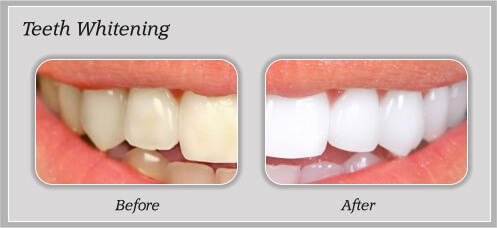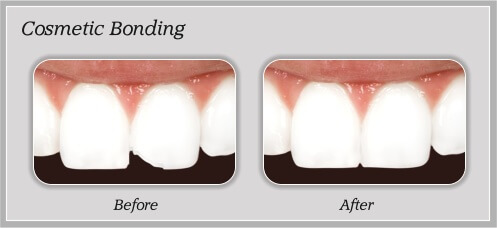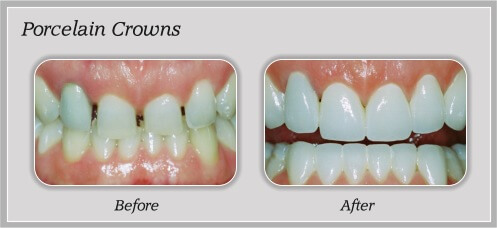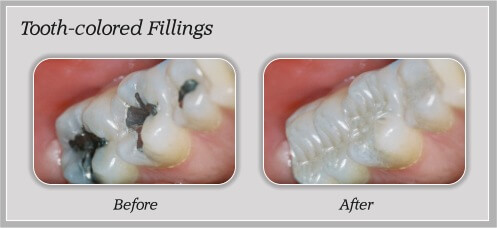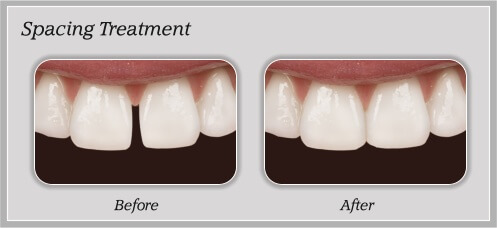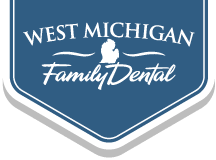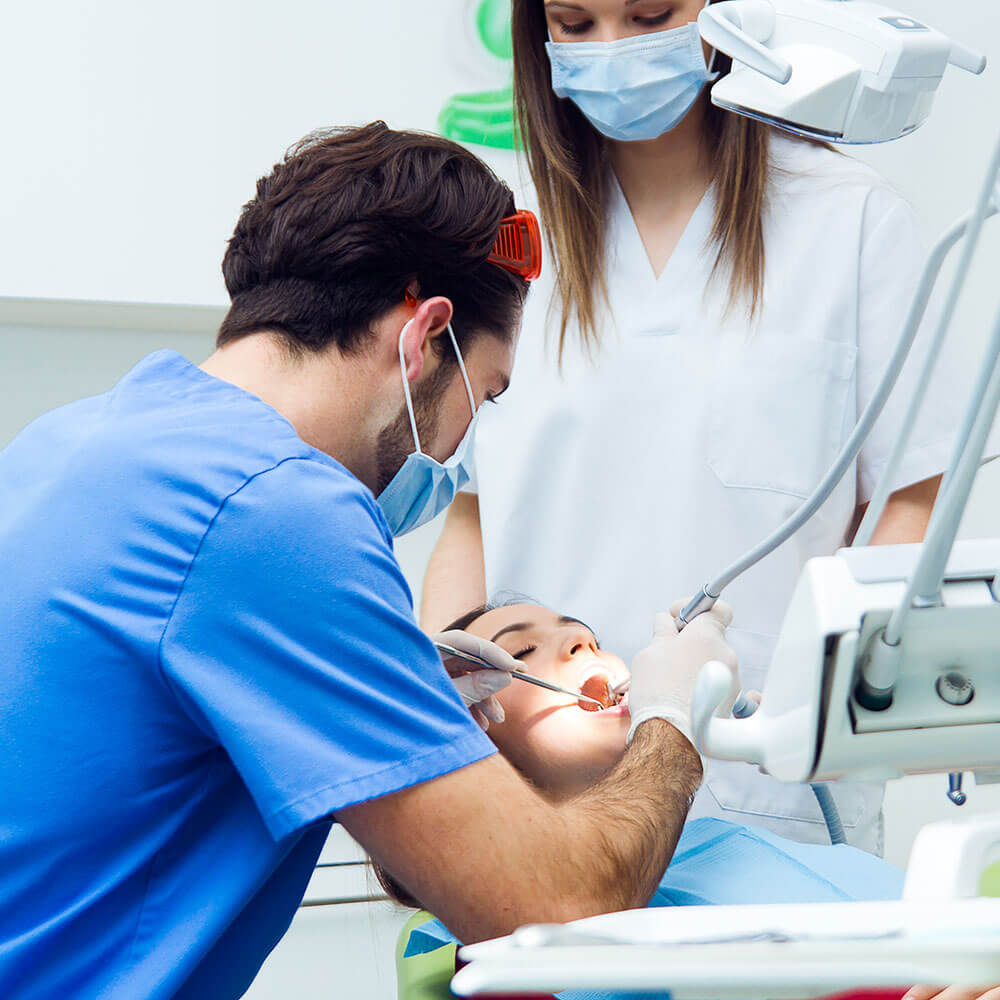Dental Services
Services & Patient Education
Dental Procedures
› Same Day Emergency Care
Below are some of the most common dental emergencies requiring immediate treatment:
• A Broken Tooth Due to Large or Repeated Fillings:
Sometimes a tooth will break as the result of large or repeated fillings. The reason for this is that replacing large and successive fillings requires removing portions of a tooth to such a degree that the tooth may break, or a filling may fall out.
• Acute Pulpitis Resulting in a Severe Toothache:
An acute pulpitis is an inflammation of the pulp within a tooth, a condition brought on by tooth decay or trauma. Immediate dental care is necessary to alleviate pain.
• Tooth Abscess:
Infection of the root of a tooth can cause intermittent pain. In addition to pain, symptoms include swelling of the gum line, swelling of the face, and in some cases, a loose tooth. Medication may temporarily reduce the pain; however, dental treatment is necessary.
› Cleaning & Prevention
• Cleaning

The manner in which you clean your teeth determines their preservation and protection from decay and other oral health conditions. At home, every surface of your teeth, gums and tongue should be brushed with fluoridated toothpaste at least twice daily. It is also important to floss once per day to loosen plaque and debris that becomes lodged in the crevices of the teeth.
You should make an appointment for a professional dental cleaning once every six months. At that time, a hygienist will inspect the gums for periodontal disease, which is the primary cause of tooth loss in America. The hygienist will the use a tool to gently scrape away hardened plaque on the teeth that is not removable using traditional brushing techniques. This plaque is responsible for harboring bacteria that can cause tooth decay. Regular professional cleanings also help remove topical stains from beverages like coffee and tea. Furthermore, the small cost of preventative care tends to save patients money on future dental restoration and treatment costs.
• Consultation
Your dental cleaning may be followed up with a brief consultation from your dentist. Depending on how much time has passed since your last dental visit, your dentist may request x-rays of your teeth and jaw to detect underlying conditions. The dentist may review your x-rays and the surfaces of the teeth for caries, decay and possible complications. If problems are found, he or she will discuss options for treatment, as well as ways you may be able to prevent additional problems in the future.
› Crowns and Bridges
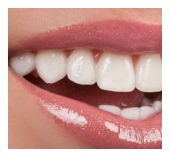
A crown (cap) is a restoration that is placed on teeth that have lost a lot of their structure. There are various types of crowns, ranging from full porcelain to full metal crowns. Your dentist will explain the advantages and disadvantages of each kind for you.
Crowns may also be used to securely attach a bridge if the structure of the surrounding teeth is inadequate. A bridge is a dental appliance that is used to replace one or more missing teeth. They are designed to be cosmetically appealing and to restore proper occlusion. Like crowns, bridges are fully customizable and made of various materials, including porcelain and metals. Although not as permanent as a cap, bridges are bonded to the surrounding teeth and only removable by your dentist.
Both crowns and bridges are created to match the color, height, texture, and overall appearance of your teeth. Most crowns and bridges will last for life, eliminating the need to replace them unless they fall out or become loose. You may prolong the durability of your crowns and bridges by practicing good oral hygiene and visiting your dentist for regular check-ups and cleanings.
If you live in or around Fremont, give us a call today to schedule your appointment.
› Teeth Whitening

Teeth stains are inevitable due to our consumption of a variety of foods and drinks (soda, spicy food, coffee, etc.). However, advanced teeth whitening technology has enabled dentists to whiten teeth without adversely affecting the tooth structure.
Almost all whitening methods are similar in concept, but some are much more effective because of the way the whitening material is delivered to the teeth. Another contributing factor is the concentration of the material, which is why less potent over-the-counter whitening systems usually don’t give patients the results they are hoping for.
One of the main methods of professional whitening is tray whitening. In tray whitening, an impression is taken and a custom tray is made for the patient. Then, a supply of whitening gel is given to the patient and he/she wears the tray for a few hours each day (techniques differ) for a period of time until an acceptable result is achieved. Sensitivity of the teeth is a normal side-effect of this whitening method and is almost always transitional.
› Tooth-Colored Fillings

When considering tooth fillings, one of the options available is composite fillings which are made from durable plastics that are similar in color to natural teeth. Because the composite fillings are tooth-colored, they look more natural and are less noticeable compared to other types of fillings.
Another benefit of tooth-colored fillings is that they are compatible with sealants, allowing your dentist to perform both procedures in a single sitting and thus preventing further decay. There are other advantages to composite, tooth-colored fillings such as, most importantly, its ability to bond to tooth structures. Also, in many cases these fillings can be repaired by the addition of more composite material.
Speak with one of our doctors to find out which kind of filling is best for you.
If you live in or around Fremont, call or schedule an appointment today.
› Implant Restorations

During the last 20 years, dental implants have become a desirable alternative to other methods of replacing missing teeth. Excellent success rates and a range of available options give dentists a variety of new ways to treat and replace lost teeth.
Dental implants play an essential role in restorative dentistry. Because they are permanent prosthetics that are both natural-looking and cosmetically appealing, implants can be used either for cosmetic purposes or for complete full-mouth restorations.
• Who Qualifies for Dental Implants?
Your dentist can evaluate your case and tell you if you are a candidate for dental implants. Structurally, a dental implant is a titanium-based cylinder that replaces the missing tooth root. After a period of time, other parts are placed on the implant to enable your dentist to eventually place a crown (cap) on the implant. Implants can also be used to support full or partial dentures, dramatically improving denture retention and stability.
Most patients with adequate bone mass can have implants, although it varies among individuals. Typically an x-ray and CT-scan are performed to determine if you have enough bone to place the implant, as well as to verify the size and kind of implant that should be placed.
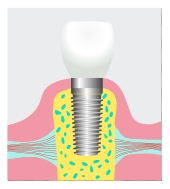
• Benefits of Dental Implants
When compared to fixed bridges and removable dentures supported by other teeth or gum tissue, implants offer numerous advantages:
1. Better esthetics:
Since implants are placed in the gum similar to the way a natural tooth is supported, they offer a more realistic and natural look compared to other alternatives.
2. Reduction of bone resorption
When a tooth is lost, the supporting bone structure gradually recedes. Placing an implant in that empty space significantly reduces the speed of bone resorption and provides stability for this valuable tissue.
3. Retention:
Patients who have experienced removable full or partial dentures know that keeping their dentures in place is always a challenge. Dental implants offer a great improvement to denture retention for all patients. In some cases the denture can be secured to a group of implants with special screws that stabilize the denture completely.

4. Preserving natural tooth structure:
Often the preferred method of replacing a single missing tooth is a bridge. Bridges require extra preparation for the surrounding teeth to ultimately connect 3 or more teeth. This negatively impacts your health by making the task of retaining your teeth more difficult and by often requiring the destruction of existing tooth structure to create room for the new bridge. An implant is mostly an independent unit and does not negatively affect the adjacent teeth.
Looking for a great implant dentist in Fremont? For more information please call our office to schedule your consultation.
› Root Canal Treatment
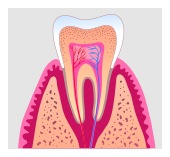
Every tooth consists of three different layers. The outermost and hardest layer is enamel, and the second layer is dentin. The third is pulp, which is the cavernous space where the live tissue and nerve of each tooth is located.
If for any reason the pulp space is exposed to the outside, the tissue becomes contaminated and eventually infected. The exposure of pulp happens in many circumstances, such as when you have a large cavity or a fractured tooth. Your dentist can explain the exact reason for damage to this tissue. In these cases, the treatment is usually root canal treatment.
Root canal treatment is the process of going inside the pulp space and removing the infected, dead tissue. The space is then disinfected and sealed with special materials. Nowadays, root canal treatments are performed with advanced techniques and materials, making them far more comfortable and faster. After root canal treatment is complete, your restorative dentist will usually place a crown on your tooth to safeguard against fracture.
If you have any questions about root canal treatments and you live in Fremont or surrounding area, give us a call today!
› Dental Sealants

Sealants are thin layers of resin that are placed on the pits, fissures, and grooves of molars to prevent decay on these surfaces.
The majority of decay on back teeth starts in the grooves and pits of chewing surfaces, especially during the first few years after their eruption. Sealing these surfaces with composite resins prevents this kind of decay.
Sealants are one of the most effective methods of preventing decay on the surfaces where they are placed. Although it is still a possibility that decay may develop on surfaces in between teeth, sealants significantly reduce the overall chance of having cavities.
› Dentures
• Standard Full Dentures
Standard full dentures are dentures that comprise a full set of upper and lower teeth. This type of denture uses suction to stay in place. They are made of a pliable material which makes suction easy. However, it is for this reason that standard full dentures require routine visits to the dentist. Being pliable, the dentures are susceptible to shrinkage, thus creating an ill-fitting prosthetic that can result in the atrophy of the jawbone.
• Partial Dentures
Partial dentures are dentures that replace only a limited number of teeth, not an entire set. Partial dentures are a single piece fitting that is supported by the remaining teeth and gums. They are much more secure than standard full dentures and are more comfortable.
• Cosmetic Dentures
Cosmetic dentures, as you can imagine, are made to look as natural as possible. Unlike standard dentures that use a heat curing process which leads to dentures that become ill-fitting over time, cosmetic dentures are made from a special acrylic base that eliminates the possibility of the denture shrinking and warping.
Furthermore, some cosmetic dentures achieve a natural appearance through the use of implants. Implants are installed in the mouth so that the dentures have something to hold onto. The cosmetic denture will either rest on or snap onto the implant. What this does is allow the denture to stay in place without the chance of it moving around, which makes the denture more comfortable than a standard one.
Loss of teeth and expensive treatment options don’t have to prevent you from continuing to lead a healthy and happy life. Removable dentures are a suitable course of treatment for many people. You deserve to give yourself the best treatment possible. If you live in or around Fremont and need a consultation for dentures, give us a call today.
› Oral Surgery
Wisdom teeth extraction surgery is often performed to prevent future dental issues or to correct an existing problem. Around the age of 18, adults have 32 teeth, 16 on top and 16 on bottom and yet the average mouth can only hold 28 teeth. Dental complications can arise when the four extra teeth, known as the Third Molars, or “wisdom teeth” erupt, forcing their way into the space.

Because your jaw may not have enough space for your wisdom teeth, they can emerge at awkward angles resulting in crowded space. If they erupt they may erupt partially through the gums causing a gum tissue flap to grow over them. Food and germs are more easily prone to get caught under this flap and become difficult to clean resulting in infection.
Your wisdom teeth can also become impacted meaning they become stuck in the jaw and never break through the gums. Serious complications can arise from impacted teeth including infection or damage to the bone, nerves or other teeth.
Wisdom teeth extraction is an out patient surgery and generally requires only a few days recovery time. Local anesthetic is usually used to numb the area around the tooth unless multiple or all wisdom teeth will be removed in which case a general anesthetic is usually used.
During the extraction process the gum tissue is opened over the tooth and any bone on the surface of the tooth is removed. The tissue connecting the tooth to the bone is separated and the tooth is then removed. In some cases the tooth is broken into smaller pieces for easier extraction.
After the tooth is removed, you may need stitches. Cotton gauze is placed over the wound to help stop the bleeding.
• Post Surgery
In most cases, the recovery period lasts only a few days. Take painkillers as prescribe by your oral surgeon. Listed below are some post-op surgery tips.
- Change the cotton gauzes periodically to keep the wound clean.
- Be careful to avoid biting your lip, tongue or cheeks post surgery as a result of the applied anesthesia.
- To minimize swelling, you can apply ice packs to the sides of your face where surgery was performed.
- Avoid using a straw during the healing process. The sucking movement can loosen the blood clot and increase the healing time.
- After the first day, gently rinse your mouth with warm salt water several times a day to reduce swelling and relieve pain.
If you live in or around Fremont, call our office to find out if you should have your wisdom teeth taken out.
› 3rd Molar Extraction
Oral Health
› How to Brush Your Teeth
The first step is to choose a good toothbrush. You always want to use a soft brush with a small head. A soft brush is hard enough to remove plaque, yet gentle enough not to damage your teeth or gums.
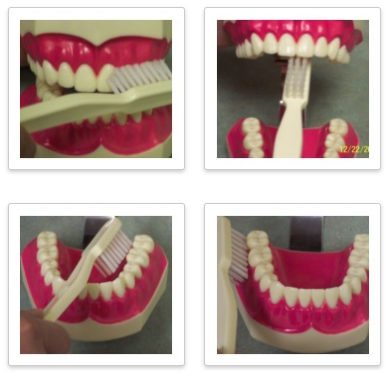 The next issue is to select good toothpaste. In general, any toothpaste that contains Fluoride will do the job, unless you have special needs that are determined by your dentist. Two of the best brands of toothpaste are Colgate Total and Crest Multicare.
The next issue is to select good toothpaste. In general, any toothpaste that contains Fluoride will do the job, unless you have special needs that are determined by your dentist. Two of the best brands of toothpaste are Colgate Total and Crest Multicare.
The first rule of brushing is to start from a specific location and work your way to the opposite side, continuing all the way through the whole mouth so that you end where you started. This way you won’t miss any area. Usually a pea-sized amount of toothpaste is enough. An adequate brushing should take at least 2 minutes and preferably around 4 minutes.
There are a variety of techniques for brushing your teeth, but one of the most popular ones is described here:
Hold the brush at a 45 degree angle toward the teeth and gums. Gently press against the gums so the tips of the bristles go in between the gum and the teeth. Then apply a few lateral strokes and roll the brush down to sweep the plaque away from the teeth and the gum. Repeat this motion 6 to 10 times and move on to the next area of 2 to 3 teeth. If your mouth is full of foam, spit it out and continue brushing. Your brushing is completed when you have brushed all the surfaces of your teeth, not when your mouth is full! On chewing surfaces, short strokes work best to get the plaque out of the grooves and pits. When brushing the back side of your front teeth, hold your brush vertically to be able to reach the teeth better.
As far as frequency of brushing is concerned, ideally you want to brush your teeth after each meal. But if you can’t, brush at least twice a day – after breakfast and before going to bed. If you live in or around Fremont, give us a call today to schedule your oral health evaluation exam.
› How to Floss Your Teeth
The surfaces between teeth are not easily accessible by toothbrush; therefore, the best way to clean them is by flossing. The ideal frequency for flossing is like brushing: ideally after each meal, though one time a day (before going to bed) is the minimum necessary.

To start, cut a piece of dental floss (approximately 2 feet). Wrap both sides of the floss around your middle fingers. Using your index and thumb, glide the floss in between all of your teeth one by one. When flossing, make sure you are not cutting your gums. The goal is to clean the teeth surfaces, not the gums. In the space in between the teeth, press the floss against each side of the tooth (hug the tooth) and gently move it back and forth and up and down. Then move to the opposite surface of the adjacent tooth.
If you have any questions about flossing your teeth and you live in Fremont or the surrounding area, give us a call today!
› Electric VS Manual Brush
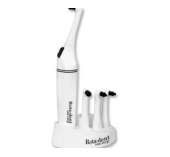
There have been multiple studies comparing the effectiveness of manual brushes and electric brushes.
Although not all electric brushes are the same, these studies conclude that, in general, electric brushes are more efficient in controlling plaque than manual brushes. Theoretically, you can do a very good brushing with a regular hand brush, but the movements of an electric brush make the task easier and more effective.
Also, some electric brushes (Sonicare) produce sonic vibrations that are difficult to mimic with a hand brush! Other electric brushes like Oral-B and Rotadent have small heads that help you access hard-to-reach areas of your mouth. This aspect is more important when you are talking about someone with orthodontic braces or a history of gum disease.
If you have any questions about electric toothbrushes and you live in Fremont or the surrounding area, give us a call today!
› Bad Breath
There are a few different causes of bad breath. Ranging from stomach problems to diet and teeth problems, most of the causes can be found in the mouth. They are:
- Tongue (when bacteria grows in between the papilla)
- Teeth cavities (especially when food particles get stuck in them)
- Gum diseases
- Extraction sites during healing
- Dentures when not cleaned properly
- Alcohol and tobacco
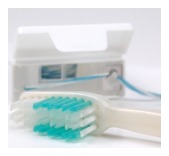
If you or someone you know is concerned about bad breath, the first step is a dental check up. Your dentist will be able to confirm or rule out the source of the bad breath.
When the cause is found, treatment will be determined and explained by your dentist. If the source of the bad breath is your mouth, there is little chance that mouth washes or mints can treat the problem. They usually mask the problem for a short period of time, and can sometimes exacerbate the situation (mouthwashes that contain alcohol cause dry mouth and usually make the bad breath worse).
These are a few other, non-dental reasons that cause bad breath:
- Sore throat
- Tonsillitis
- Some food
- Infection of air passages
Following a good oral hygiene routine and receiving regular dental check ups are the best ways to prevent bad breath. If you live in or around Fremont, give us a call today to schedule an appointment and get rid of bad breath forever!
› Dental Health & Your Diet
Sugar is the main cause of dental decay when bacteria are present. However, the frequency of your sugar consumption is more significant than the amount of sugar you eat.
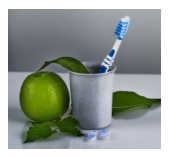
Probably the worst thing you can do to your teeth is to drink a soda and have a sip every few minutes over a long period of time; the same is true for snacking. It is recommended that if you want to have a snack, soda, or juice, it is better to have it after food, as dessert, or have it in one sitting. Eating or drinking something sweet over an extended period of time creates a constant supply of sugar for bacteria that causes tooth decay!
It is important to be aware of all the possible sources of sugar out there. It is not just everything that is sweet, but anything that can turn to sugar, like pieces of bread. Cutting down your sugar intake is good for cavity prevention, as well as your general health.
But what about when you have to have sugar? The best way to avoid cavities is to prevent the sugar from staying next to your teeth. Brushing after eating sugar, rinsing your mouth with Fluoride mouth wash, or chewing sugarless gum can help. However, nothing has the effect of avoiding sugar!
Is there any kind of food that prevents tooth decay? Well, not really. Some people believe that chewing foods like apples and carrots may have some plaque removal effects, but they still contain some sugar, so any advantage is not clear.
Another group of food that causes significant damage to teeth structure is acidic food. If in frequent contact with teeth, things like limes, lemons, and grapefruits can cause serious irreversible damage (erosion) to your teeth.
If you live in or around Fremont, don’t hesitate to call us with your oral health questions.
› Fluoride & Decay Prevention
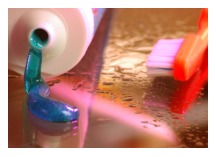 Many years ago scientists started to notice that children who were born and raised in areas with natural fluoride in drinking water had fewer cavities than children in other areas. Fluoride absorbed by your body when teeth were forming (during mother’s pregnancy to early childhood) integrates into the structure of enamel and makes it stronger.
Many years ago scientists started to notice that children who were born and raised in areas with natural fluoride in drinking water had fewer cavities than children in other areas. Fluoride absorbed by your body when teeth were forming (during mother’s pregnancy to early childhood) integrates into the structure of enamel and makes it stronger.
After teeth eruption, fluoride found in your toothpaste, mouthwash, or in what your dentist places on your teeth still has a positive effect on your teeth. It strengthens the enamel and reduces the chance of tooth decay.
If you have children and live in an area that has no fluoride in its drinking water, you should consult your dentist and physician about fluoride tablets that are available for children.
If you have any questions about Fluoride treatment and you live in Fremont or surrounding area, give us a call today!
› Smile Gallery
